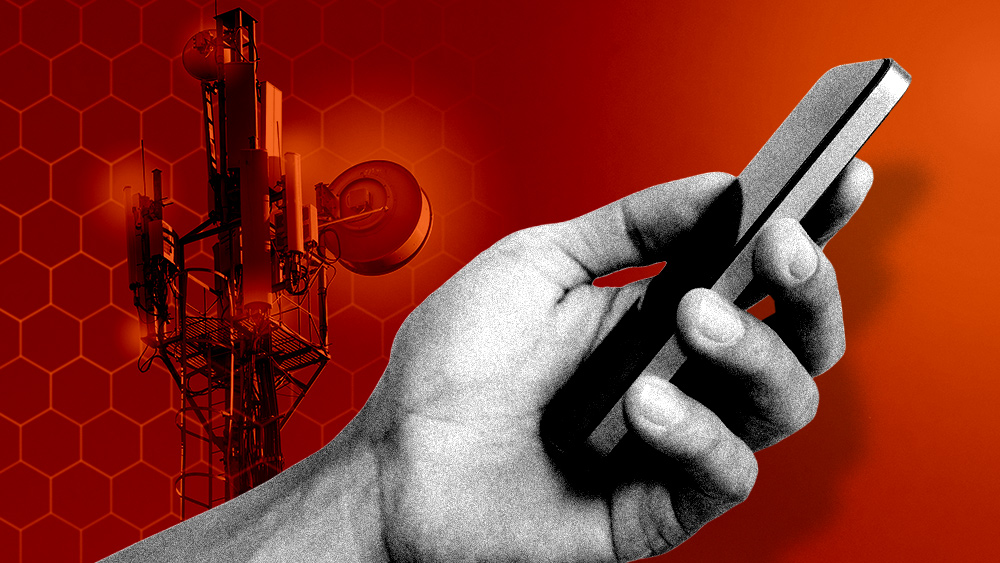Ride-sharing companies like Uber and Lyft cause increased traffic congestion in cities, research finds
03/17/2018 / By David Williams

It’s taken ride-sharing companies like Uber and Lyft less than a decade to become majorly disruptive market forces. But it looks like the market isn’t the only thing getting disrupted. Executives at either company have long maintained that their services help improve traffic in cities where they are available by virtue of the fact that they complement existing transportation services. But data gathered by third-party researchers show that this is simply not the case.
According to a report that covers a number of recent studies looking into the impact of ride-sharing services in major cities in the U.S., both Uber and Lyft contribute to increased congestion in roads. Indeed, instead of making the traffic situation in places where they are available much better, they end up making things worse somehow. And researchers are beginning to speak out about it.
Uber and Lyft maintain that in a city like Boston, for example, its existence is a perfect complement to the public transit system by connecting riders to central hubs such as the Logan Airport and South Station. However, neither of the two companies have ever released any official data or research to support such claims. That’s precisely why third-party researchers felt the need to conduct studies of their own in the first place.
The actual impact of having Uber and Lyft around in your city is now becoming quite clear, according to Christo Wilson, a professor of Computer Science at the Northeastern University in Boston. After looking at Uber’s practice of surge pricing during times of heavy volume as well as checking other research studies, a team led by Wilson came to only one conclusion. “The emerging consensus is that ride-sharing [is] increasing congestion,” he said.
Based on one study that surveyed almost 1,000 people, more than half of the participants admitted that they would have gone for public transportation options instead of using Uber or Lyft, or go with any other option like walking, biking, and even skipping their trips if neither service was available. And instead of using Uber or Lyft rides as connecting rides from one terminal to another, they mostly just used them to get directly to their destinations. (Related: No self-driving allowed: Uber wants to ban privately-owned self-driving vehicles in your city.)
Now since all of those people are going to use ride-sharing services instead of other conventional transportation options, that means less commuters share the roads as collectives. More individual cars are simply going about their own way, which is likely where all the added traffic congestion comes from. More recently, Uber implemented a new feature called Express Pool, where users gather at one common pick-up point and travel as a group to a common drop-off point. Since that’s exactly how a bus or express train operates, then it’s totally redundant if not highly unnecessary.
A separate study that surveyed more than 4,000 participants also showed pretty much the exact same results. People would have used other transportation options – notably, ones that already exist – if ride-sharing services weren’t available. So where does that leave companies like Lyft and Uber?
According to Adrian Durbin, a spokesman for Lyft, their service aims to reduce the number of personally-owned cars on the road. “Lyft is focused on making personal car ownership optional by getting more people to share a ride, helping to reduce car ownership, and partnering with public transportation,” he said.
Meanwhile, Uber spokeswoman Alix Anfang echoed the sentiment. “Uber’s long-term goal is to end the reliance on personal vehicles and allow a mix of public transportation services like Uber [itself],” she said.
Still, good or bad, their intentions don’t seem to be translating all that well into reality. While they give people the choice to skip other forms of public transport options, they are obligated to add more cars to serve their prospective customers, which goes all the way around and contributes to the very problem that they claim they are trying to solve.
It may well be a long and bumpy ride before this issue gets cleared up. The best advice for the ride-sharing public would probably be to re-evaluate the public transport options available to them to see if they can give one or more of them a shot instead of contributing to the problems caused by ride-sharing.
Sources include:
Tagged Under: cars, Lyft, public transportation, research, ride hailing, ride sharing, road congestion, roads, Traffic, transportation, Uber
RECENT NEWS & ARTICLES
COPYRIGHT © 2017 GLITCH.NEWS
All content posted on this site is protected under Free Speech. Glitch.news is not responsible for content written by contributing authors. The information on this site is provided for educational and entertainment purposes only. It is not intended as a substitute for professional advice of any kind. Glitch.news assumes no responsibility for the use or misuse of this material. All trademarks, registered trademarks and service marks mentioned on this site are the property of their respective owners.




















